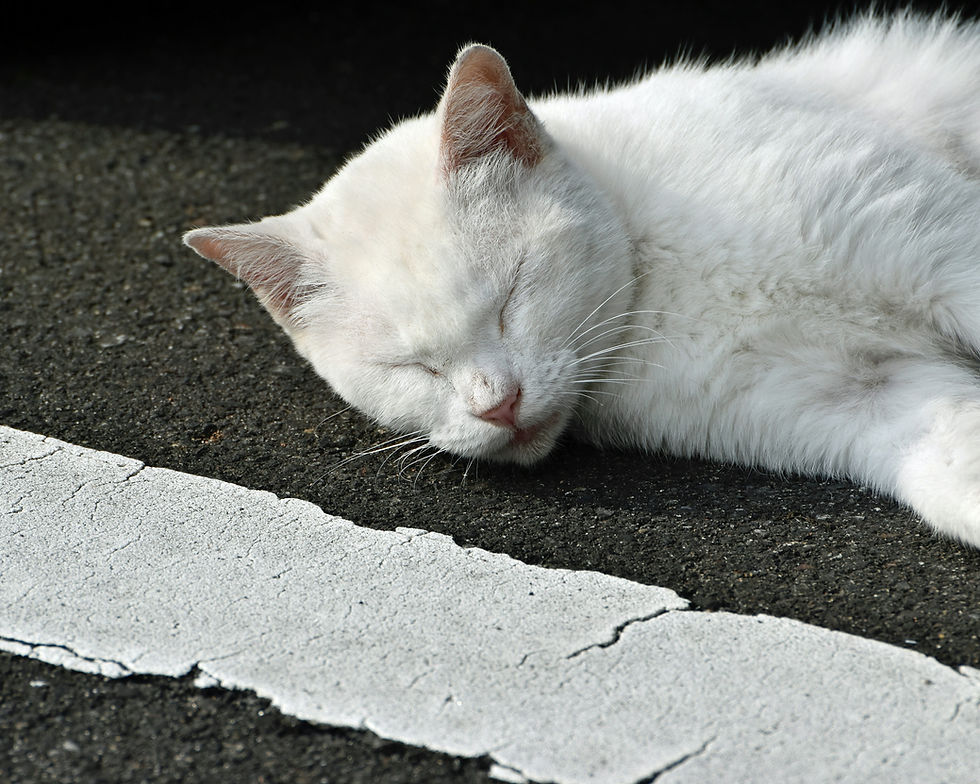Types of FIP: Wet vs. Dry FIP
- CureFIP GCC

- May 20
- 3 min read
Feline Infectious Peritonitis (FIP) is a deadly disease in cats caused by a mutation of feline coronavirus (FCoV). Once rare and untreatable, FIP is now more widely recognized and, with modern antiviral therapies, can often be cured.

FIP appears in two main forms: Wet (Effusive) FIP and Dry (Non-Effusive) FIP. Each presents different symptoms and diagnostic challenges, and understanding these differences is critical for early detection and successful treatment, especially in regions like the GCC, where multi-cat households and indoor environments are common.
📊 Overview of FIP Types
There are two primary classifications of FIP:
Type of FIP | Description | Key Symptoms |
Wet (Effusive) | Characterized by fluid accumulation in the abdomen or chest | Distended abdomen, labored breathing |
Dry (Non-Effusive) | Characterized by inflammation in specific organs | Ocular or neurological symptoms, weight loss |
Some cats may present with mixed symptoms, and in rare cases, the disease can evolve from one form to another.
💧 Wet (Effusive) FIP: Symptoms and Fluid Accumulation
Wet FIP accounts for approximately 60–70% of FIP cases. It is more acute and progresses faster than dry FIP.
🩺 Characteristics of Wet FIP:
Fluid accumulation in the abdomen (ascites) or chest (pleural effusion)
Yellowish or straw-colored fluid with high protein content
Rapid progression of symptoms
🔍 Common Symptoms:
Swollen or bloated abdomen
Difficulty breathing or open-mouth breathing
Lethargy and weakness
Decreased appetite and weight loss
A fever that does not respond to antibiotics
In wet FIP, the immune system's reaction to the mutated virus causes leaky blood vessels, leading to fluid buildup in body cavities. This is why early identification and drainage of fluid can be useful in diagnosis.
🔥 Dry (Non-Effusive) FIP: Organ-Specific Inflammation
Dry FIP is more chronic and subtle in its presentation, often affecting specific organs.
🩺 Characteristics of Dry FIP:
Little or no fluid accumulation
Granulomatous lesions in organs such as the kidneys, liver, brain, and eyes
More difficult to diagnose due to varied symptoms
🔍 Common Symptoms:
Neurological signs: seizures, wobbliness (ataxia), head tilt
Ocular signs: inflammation, blindness, irregular pupils
Jaundice
Poor growth in kittens
A fever that doesn’t respond to antibiotics
Because dry FIP can affect the central nervous system or the eyes, symptoms may appear slowly, and affected cats may be misdiagnosed with other chronic conditions.
🔄 Key Differences Between Wet and Dry FIP
Feature | Wet FIP | Dry FIP |
Fluid Buildup | Yes (abdominal or chest) | No or minimal |
Disease Progression | Rapid | Slower, chronic |
Diagnosis | Easier via fluid analysis | More difficult, requires imaging or biopsy |
Common Symptoms | Swollen belly, breathing issues | Ocular or neurological signs |
Treatment Response | Typically faster to respond | May require a longer antiviral course |
The same virus causes both forms, but the way the immune system reacts determines the type and severity of the disease.
🔁 Can Wet Turn into Dry FIP?
Yes, FIP types are not fixed. In some cases:
A cat may initially present with wet FIP and later develop dry-type symptoms.
Some cats may have mixed or overlapping signs (e.g., fluid buildup and neurological involvement).
This shift is thought to occur when the cat’s immune system begins limiting fluid leakage but fails to eliminate the virus from other tissues, leading to organ-specific inflammation.
Monitoring symptoms and working with a vet experienced in FIP is key for adjusting treatment as the disease evolves.
🧪 Diagnosis and Treatment Considerations
🔍 How Wet FIP is Diagnosed:
Abdominocentesis or thoracocentesis: Extracting and testing fluid
Fluid is typically yellow, sticky, and protein-rich
Blood tests: Low albumin:globulin ratio, high white blood cells
Imaging (ultrasound or X-rays) confirms fluid presence
🔍 How Dry FIP is Diagnosed:
More complex, requires imaging (CT, MRI, ultrasound) or tissue biopsy
Eye exams or neurological evaluations
Blood work and acute phase proteins (like alpha-1-acid glycoprotein)
💊 Treatment for Both Types:
GS-441524 antiviral injections or oral pills remain the gold standard
Treatment duration: 84 days (12 weeks), though dry FIP may require longer
Response time: Wet FIP cats often show improvement within days; dry FIP cases may take weeks
At CureFIP GCC, we offer both oral and injectable GS treatments, with guidance tailored to your cat’s specific symptoms and disease type.
🛡️ Final Thoughts: Early Action is Critical
Understanding the difference between wet and dry FIP can help save your cat’s life. While wet FIP is easier to diagnose and treat quickly, dry FIP requires vigilance and expert diagnosis. In both cases, early intervention with antiviral therapy offers the best chance of survival.
If you suspect your cat has FIP, contact a FIP-experienced veterinarian or reach out to CureFIP GCC for guidance on treatment protocols, dosage plans, and ongoing care.
.png)



Comments